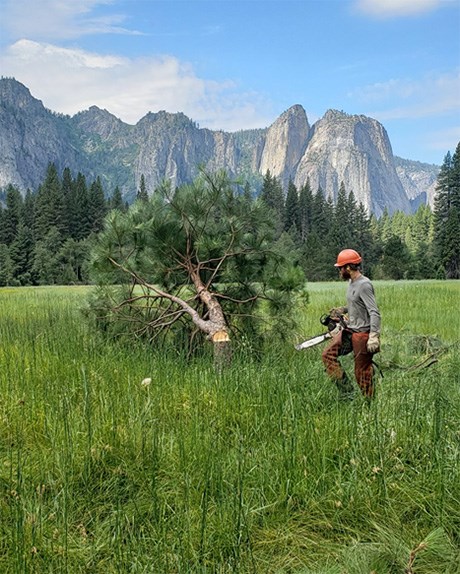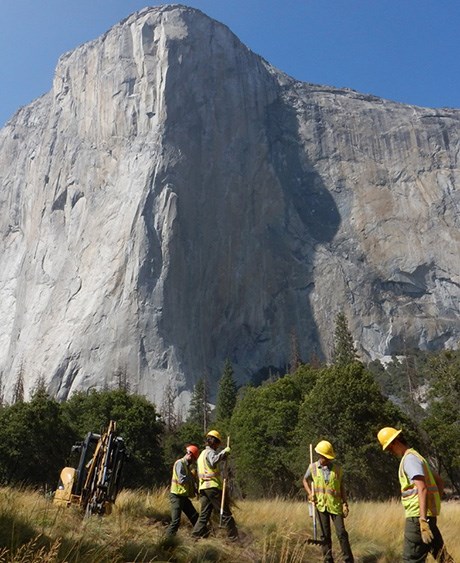
The large, moist, mid-elevation meadows and the riparian vegetation communities of Yosemite Valley owe their existence to river and groundwater processes that produce regular flooding and sustain high water tables, and past burning by American Indians and current prescribed burns that maintain open conditions for meadows. Yosemite Valley meadows and riparian habitats support rare and endemic species as well as an exemplary diversity of plant and animal species found in a variety of ecological niches. Most meadow loss occurred from when Euro-American settlers came to the Valley in the 1850s until the 1940s. While some scientific studies have shown natural factors contributing to these changes, it is most likely a combination of human induced and natural changes, such as cessation of burning by American Indians, altered hydrology, domestic livestock grazing, public use of the meadows, wildlife herbivory, natural succession, and climate change. Prior to then California Indians conducted small, low-intensity surface fires for centuries to increase growth and yield of crops, aid in hunting and insect collection, and perform other functions. Euro-American settlers eliminating anthropogenic fire had immediate effects, with a widespread establishment of trees in and around the meadows taking place after. Plowing, mowing, burning, and probably in some cases severe overgrazing, complicated the increase in tree cover to varying degrees, as did the clearing activities of the 1890s, 1930s and 1940s. Since then park managers have taken action to control conifer encroachment in meadows. Alterations in meadow hydrology, almost always making meadows drier, have had an equally altering effect. Anthropogenic impacts to hydrologic flows in Yosemite Valley were both purposeful and inadvertent. For example, in 1879 Galen Clark ("Guardian of the Yosemite Grant"), used blasting methods to lower the level of the terminal moraine located just downstream of El Capitan Meadow in an effort to drain upstream meadows and enhance access to east Yosemite Valley. This action likely dropped the water table in El Capitan Meadow, making it more conducive for tree establishment. Ditching done to drain the meadows had the same drying effect, with roads built across meadows exacerbating the hydrological alterations. Most Merced River tributaries in Yosemite Valley were also channelized in part, altering the path of water that would naturally flow from cliff walls in a sheet or braided fashion across the meadows. The effects of these actions, taking place over more than a century, are that an estimated 64% of the original meadow, open forest, and wetland habitat in Yosemite Valley has converted to forest since the mid-1800s. Infrastructure, development, and increasing rates of visitor use continue to influence the hydrologic regime, reducing the distribution and extent of connected floodplain, level and extent of meadow inundation, and the meadow extent. 
Restoration of meadows and wetlands seeks to counteract the following impacts:

Informal trails have many harmful ripple effects in natural systems. Fragmentation has further effects on meadow hydrology, habitat quality, and soil moisture, and creates conditions ideal for the introduction of non-native species. Finally, trail corridors have also been shown to pose barriers for small mammals and other wildlife. Indeed, researchers investigating trampling impacts in Yosemite Valley meadows have found that meadow condition is frequently poor in heavily used areas, smaller areas are more prone to difficulties with recovery than larger areas, and visitor-created trampling has a significantly negative impact on vegetation and macroinvertebrate structure and diversity. 
In recent decades, NPS staff manage public use of meadows and riparian zones within the Merced River corridor to minimize habitat fragmentation, maintain high ecological condition, and protect the integrity of streambanks to conserve ecosystem processes associated with meadow hydrologic and ecological function. The MRP includes a number of projects to enhance the condition of meadow and riparian areas in Yosemite Valley. These projects include:

|
Last updated: November 5, 2020
